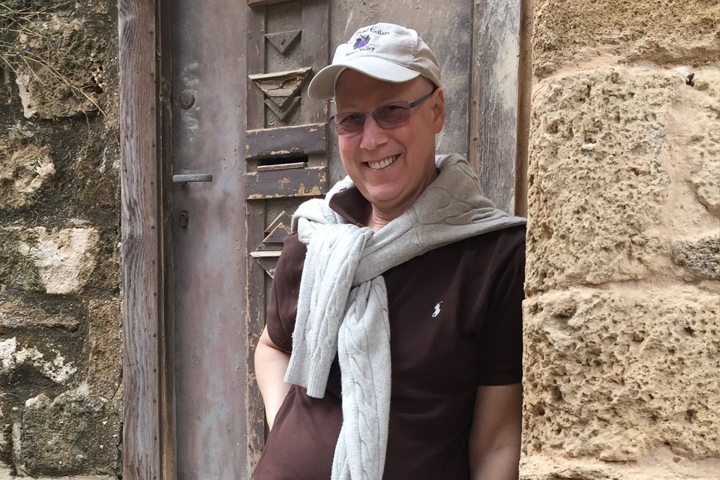Taking a Different Approach to Pancreatic Cancer Treatment

- Stage IV diagnosis makes me willing to try more daring treatments
- Chemosensitivity testing to find the best drugs to fight my tumor
- Drugs for other diseases to help the chemotherapy
I am a 55-year-old physician. I had a week-long stomach ache, and on the sixth day I recognized that I was having dark urine, an early sign of jaundice.
To figure out what was causing the jaundice, the gastroenterologist had me undergo a CT scan. The scan showed two tumors on my pancreas and several metastases on my peritoneum. I had a needle biopsy of the metastases which resulted in a diagnosis of pancreatic adenocarcinoma. I also had an endoscopic retrograde cholangiopancreatography (ERCP) to place a stent in my bile duct, which was blocked by one of the tumors and was the cause of my jaundice. I was diagnosed with stage IV pancreatic cancer. With no family history of this cancer, and being in an otherwise great state of health, this was the last thing I was expecting.
My Mind Is Open to Any Science-Based Treatment
My medical knowledge in oncology was quite outdated and limited, but I did know that the traditional treatments for my disease had thus far produced dismal results. Knowing that I no longer had much to lose, I sought an oncologist who, like me, wanted to take a different, more daring approach.
As a physician, I believe in science and the scientific method of medical research. I found Dr. Allyson Ocean, pancreatic oncology expert at Weill-Cornell, a leader in the field who was willing to try new, innovative ideas in a case such as mine.
We discussed a number of different options, including treatments that are in clinical trials around the country. All of her treatment ideas were supported by scientific research, but were not far enough along in the process to have reached the level of scientific proof. These treatments have shown good results in published studies but are not yet FDA-approved and so are considered experimental.
Chemosensitivity Testing to Determine Chemotherapy
I started with a chemosensitivity blood test. The cancer cells from my blood were exposed to various agents to determine which worked best against my particular tumor. The test showed that standard first-line treatment would not have worked and would have cost me several months of valuable time.
Dr. Ocean used the results to put together an individualized chemotherapy “cocktail” for my treatment. The drugs mitomycin, gemcitabine, and capecitabine were found to be the three agents that should work best on my tumor. This combination is unconventional therapy for first-line treatment—mitomycin is typically used as a second-line treatment.
Next, Dr. Ocean started me on treatment with paricalcitol, synthetic vitamin D, that I now receive intravenously three times a week. Research at the Salk institute in California has shown it helps break though the tumor’s stroma (a protective wall) so that the chemotherapy agent can better penetrate the tumor. Studies in mice have been very encouraging, although human studies are just beginning.
My second experimental drug is hydroxychloroquine, a relatively inexpensive oral medication, currently used to treat malaria and rheumatologic conditions. In cancer research, it has been shown to inhibit autophagy, a process where a dying cancer cell consumes expendable pieces of itself in order to conserve energy and survive. Again, studies in mice have shown success and a clinical study in humans is currently underway at the University of Pennsylvania. I am able to take both this drug and the paricalcitol without being part of a clinical trial only because both are currently on the market and FDA-approved to treat other non-cancerous conditions.
On My Own Personal Clinical Trial
I do have one hesitation in recommending my approach to others. I am concerned that by going rogue and bypassing clinical studies, I am not contributing to the goal of advancing medical science, which is so important if we are to eventually cure this devastating disease. In order to remedy this concern, patients like me, who create their own personal clinical trials, need to have some method of reporting their results. I am currently entertaining ideas on the best way to proceed.
My six months of treatment have been tremendously successful. My tumor markers have decreased by over 98 percent and my metastases are no longer visible on CT scans. So far, I am beating the odds and hope this approach proves just as successful for others who choose to try innovative ideas.
To learn more about clinical trials using vitamin D, read the articles “Clinical Trial of Immunotherapy Plus Sunshine Vitamin May Help in Pancreatic Cancer Fight” and “Presurgical Treatment for Pancreatic Cancer That Is Removable.”





